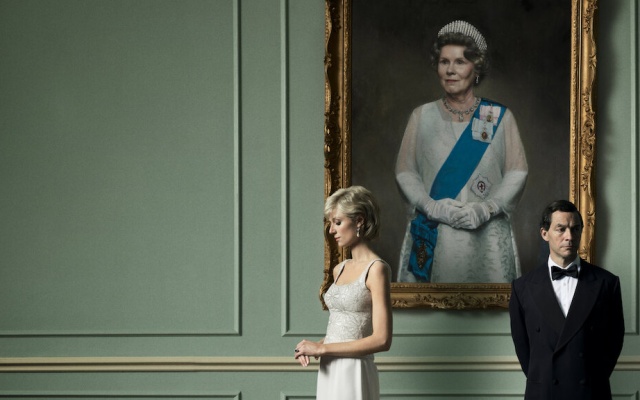The 8th of September 2022 marks the end of the world. It was neither due to pandemics, nor crisis, nor war but one elderly lady. Deceased at the age of 96 in Balmoral Castle, Scotland – Queen Elizabeth II established a demarcation line between the modernity and the past for many. The melancholic time of goodbyes, summaries and reckoning mixed with the economic and political turmoil that undermined the British society’s stability. Buckingham Palace has a new host, his work on Downing Street starts the Prime Minister belonging to the Indian minority, a believer of Hinduism – the very first one of the kind in British history. The continuation gives way to the change, the new replaces the old.
At the moment when all eyes of the world are turned towards what takes place in the British Isles, the art of film – by seizing a golden opportunity – attempts to reflect the spirit of this breakthrough moment. Netflix releases the new season of one of its loudest and most expensive productions – a TV series entitled The Crown, telling a story of the recently departed Queen. The production whose fundamental narration revolves around what the British are currently driven by. Absolutely unique time correlation of said events not only enriches the cinematographic work with new contexts and interpretative keys, but most importantly, it generates new audience attitudes, completely different to the way people reacted towards royal saga’s previous seasons. Let us take a closer look at the causes of this change as well as the role that the art of film happened to play at such an important moment for Great Britain and, perhaps, the whole modern world.
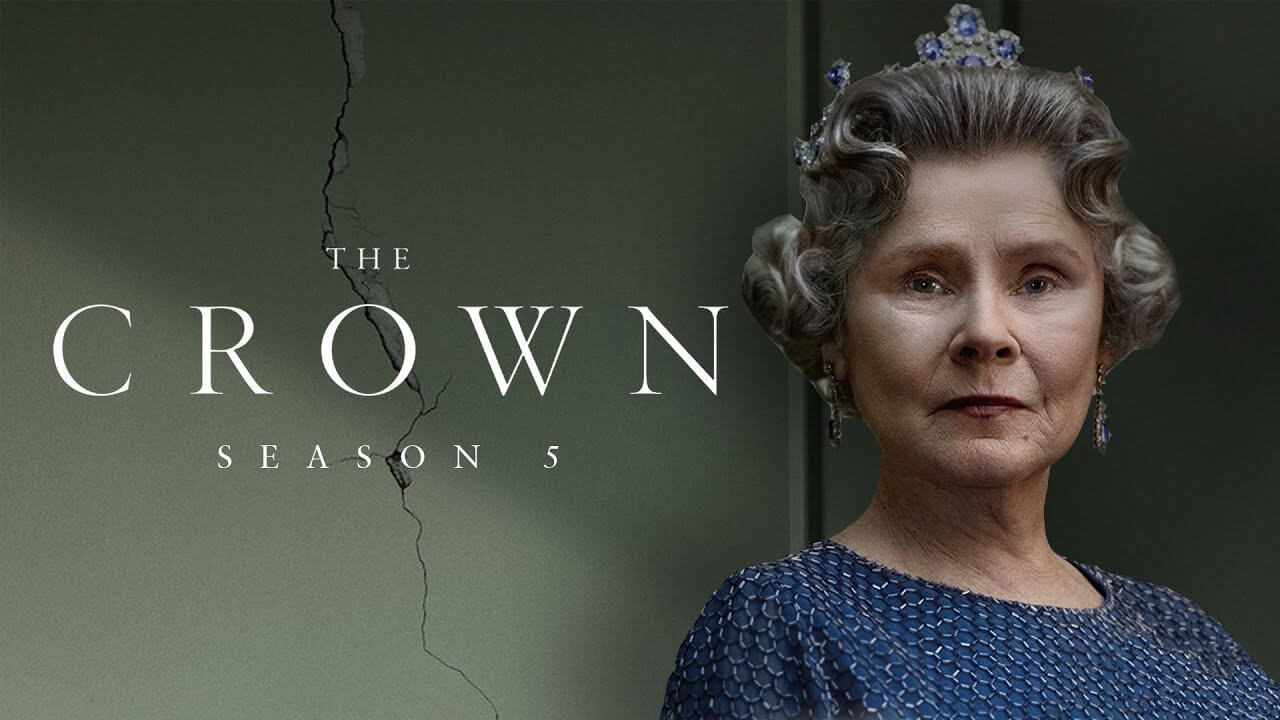
The Crown’s creator and leading producer is Peter Morgan, a London-born screenwriter and playwright of Polish-Jewish descent (interestingly, the first director who decided to bring the Morgan’s script to the big screen was Krzysztof Zanussi in Polish-Danish-English production The Silent Touch, 1992). In his subsequent screenplays, Morgan quickly finds the theme that becomes the leitmotif in almost all of his works – power. The power shown in its various manifestations, but most commonly personified by the British monarchy that he has always been fascinated by. He took up this theme while writing scripts for films such as Henry VIII (dir. by Pete Travis, 2003), The Other Boleyn Girl (dir. by Justin Chadwick, 2008), or, finally, The Queen (dir. by Steven Fears, 2006).
Besides the collaboration with film directors, Morgan is also credited for making plays brought out in British theatres, from which the one that seems to be the most interesting and loudest is The Audience, 2013. First staged in 2013 in Gielgud Theatre, West End and directed by Stephen Daldry, the play shows several weekly audiences of the British Prime Ministers with Queen Elizabeth II. The performance depicts visits of the consecutive heads of government from Winston Churchill to David Cameron. This makes it a kind of artistic chronicle and commentary on both the Queen’s rule as well as the entire political scene of Great Britain within the past half century. Helen Mirren was cast for the main role – with her experience in playing Elizabeth II in The Queen made seven years earlier – and for her appearance she received a prestigious theatre prize, the Laurence Olivier Award.
The Audience was very popular among the British and abroad. Two years later, it was even staged in Gerald Schoenfeld Theatre, New York. It was at that time when Morgan recognized the cinematic potential in the text he had written and started to work on the script incorporating motives from The Audience. All that was left to do was to reach Netflix and then, may The Crown production begin.
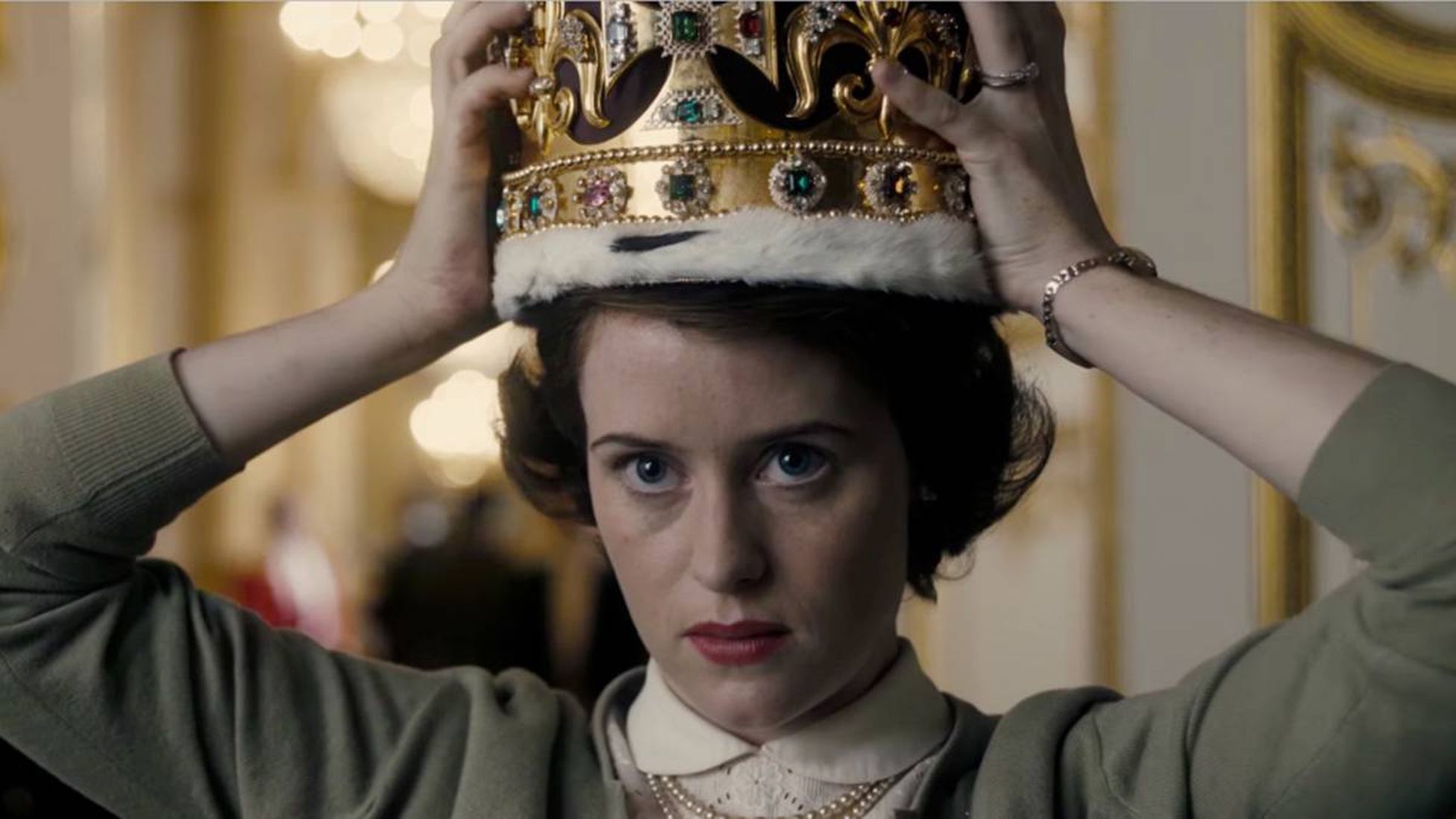
Even though The Crown is based on a play recreating a series of visits to the Queen undertaken by Prime Ministers, it is a significantly larger and more complex project. The story starting on the day of princess Elizabeth and Philip Mountbatten’s wedding spans the following decades of the longest rule in the British monarchy history. We observe the events from the life of Elizabeth herself as well as her family and the most important people responsible for the British politics. We learn about the background of affairs that shaped Great Britain into what it represents now. Morgan – this time in the role of someone more than just a screenwriter – a showrunner and thus, the actual author of the TV series – pays attention to the tiniest detail of the world created on the screen, and he does so with the staging and costume panache worthy of the royal production.
Planned for six seasons, the TV series is supposed to bring the viewer to present days. In keeping with film and historical accuracy, the cast was replaced twice with actors older by several years – a fact that intensified viewers’ emotions related to cast changes in the subsequent seasons and was a brilliant marketing stunt. So far, the Queen has been portrayed by three actresses: Claire Foy, Olivia Coleman and Imelda Staunton.
There were various factors that contributed to the huge success of the series. To name just a few – authenticity and completeness of the represented world, full-blooded characters or narrative competence that takes full advantage of the series formula where each episode, a constituent of the long story, can function as a separate, self-contained history. Yet, what determines The Crown’s utmost value and phenomena is, first and foremost, the incredible precision that Morgan’s story exhibits by balancing between the critical diagnosis of fossilized and incapacitating system, and the fascination with the institution which ensures the British nation’s stability and power as well as unifies it in the moments so critical for community’s survival.
In times when most of the old monarchies were substituted by democratic republics, meeting the Windsor dynasty, even in a TV series, feels almost like an exotic experience for a non-British viewer. It is a journey to a romantic, fairy-tale land of ancient traditions, holy ceremonies and solemn rituals. Regardless of one’s personal opinion as to whether the system is valid or not, it is difficult not to be enchanted by the magnetism that is particular to the brilliant staffage of majesty which the monarchy brings. The majesty of the ruler that, dressed in gold and purple, does not appear to be a man equal to us but rather someone who belongs to entirely different, higher order. As observed by a recently departed, notable French writer and monarchist, Jean Raspail:
”It is most definitely significant, but it would not be sufficient – especially in those egalitarianism-drenched times – if there were no concepts of royal sacrum and the ancient ritual of anointment in the nations’ subconscious. Even if its consequences are constitutionally negated, the source did not run dry and, drop by drop, it clandestinely permeates and sanctifies the person of the king.”[1]
This mechanism seems to be perfectly understood by the series’ creators. Since its very first season, it is not too hard to guess what the record-breaking budget for this production was spent on. After the death of her father, young Elizabeth is not merely nominated to rule – she is anointed. And upon speaking the words of the oath, accepting holy oils as well as the crown and the royal insignia from the archbishop’s hands, she stops being an ordinary mortal. She becomes goddess-like. A goddess that one simply has to admire.
Yet the creators of The Crown do not stop at admiration. Quickly enough, charmed with the magnificence of monarchist ceremony, the viewer is taught a bitter lesson on its consequences. Goddess’ life is not easy.
From the very spectacular opening credits, each episode reminds the viewers that the spectre of the royal crown – beautiful yet dreadful at the same time – bestrides all actions taken by the characters. This crown and the entire system it symbolises constitute the might of Gombrowicz’s form that one cannot escape. The cocoon of imposed forms, dictating the proper ways to behave, is reflected in the series by the monarchy whose survival is defined as a guarantee not only for the existence of entire British nation, but also for the system of values represented by the Crown. And each time it is in jeopardy, a simultaneous threat of form’s decay follows it. Without this form, the world would lose its meaning.
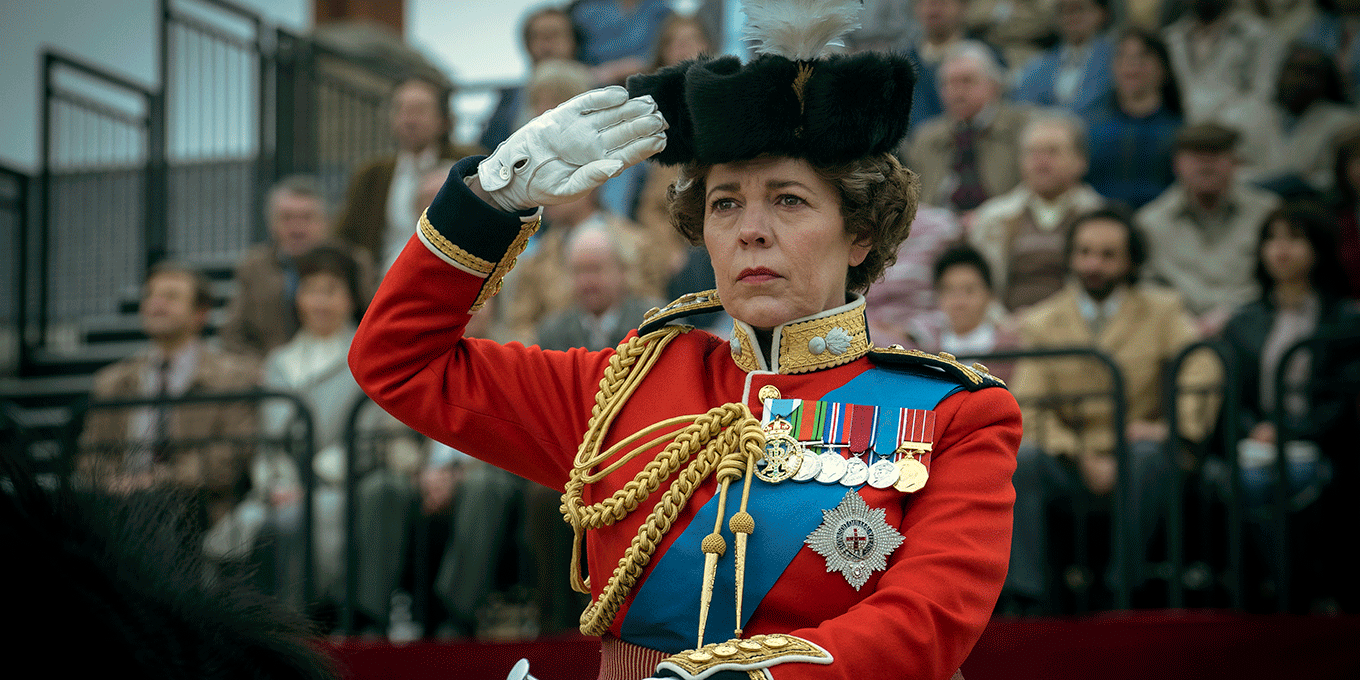
Therefore all measures taken by the monarch have to be motivated by the will to secure power and might of the Crown. To maintain the continuity and stability of the British state. Yet, for this continuity to be ensured, the Queen has to be a link to the past: the world of great wars and imperial conquests, the times of holy rituals and medieval ceremonies. The cement that preserves the power and might of the monarchy despite changing times is, then, upholding tradition, etiquette, form. In the off-balance world, she is the anchor providing strength, a relative peace of mind and a hope to survive storms. The old is superior to the new, the repetition tops the change and the continuity is better than experimenting.
Yet with subsequent episodes and seasons of the royal tale, together with the characters, we can see that the world outside Buckingham Palace walls is not a monolith but a living organism – developing, evolving and constantly transforming. These transformations in the domain of politics, customs or technology are very often difficult to be conclusively assessed. They might appear to be opportunities, but also threats. It is the responsibility of people in authority (those who govern – as consecutive Prime Ministers or those who rule – as monarchs) to skilfully evaluate what becomes a part of the world we know.
Morgan likes to use the language of symbols and thus the reality created in The Crown is filled with a substantial number of various film allegories and metaphors. Some of them are completely transparent and easy to decipher, some require a deeper reflection or, in certain cases, a wider knowledge of the royal biography. However, each time it is the language of the film imagery that lards or even substitutes the very things which – if presented solely through dialogues – would lose their interpretative potential and the atmosphere of this subtle elegance, so skilfully matched with the piece’s royalist theme.
Yet, a recurring conclusion can be drawn from the array of symbols in the picture – it is due to this clash of continuity and change the monarchy brings that order can be maintained in such a rapidly changing world. Repeatedly, said order comes with a price of personal happiness for those who bear the Crown.
The tension coming from the clash of the opposites is reflected in relationships between the series characters as well. Naturally, it does not entail a clear-cut division into spotless ideals and damnable miscreants. On the contrary, we get the picture so in-depth that it allows us to understand the characters and their motivations, whichever side each person is on. King Edward VIII who resigned from the Crown for his beloved woman, the father of the nation Winston Churchill, the Iron Lady Margaret Thatcher or the egalitarian Kennedy presidential couple that flew over the ocean for a visit – these are just some of the entire gallery of figures Morgan contrasts with the Queen in order to characterise Elizabeth herself as well as the role she plays through such juxtaposition.
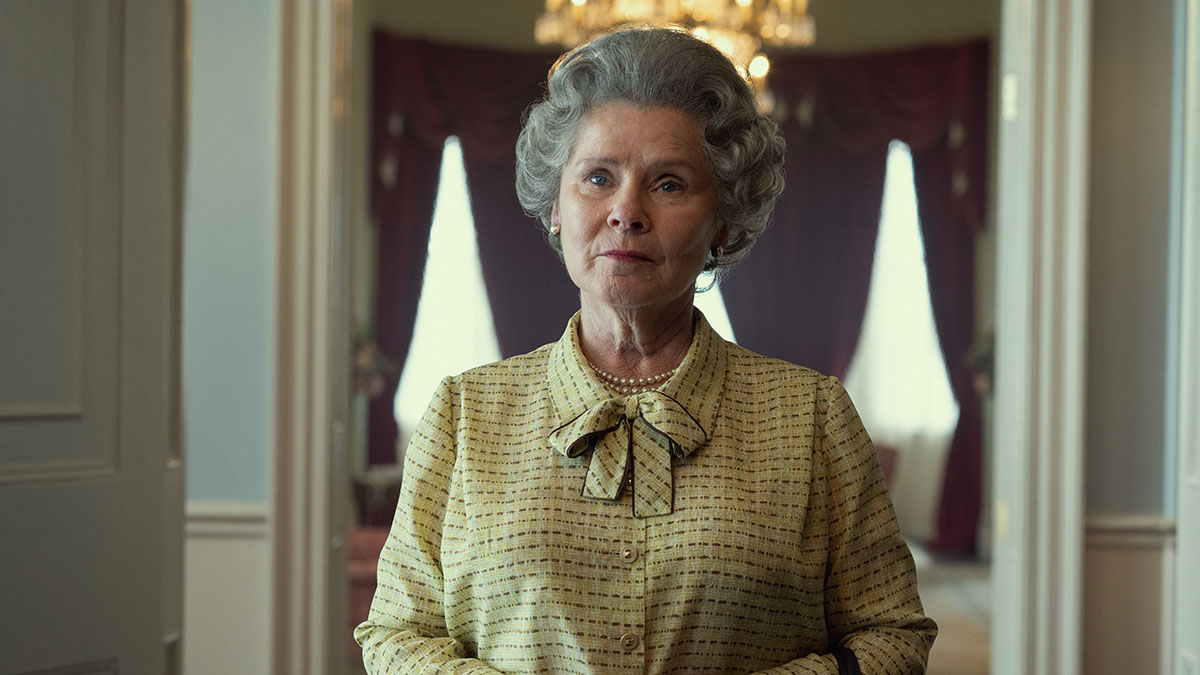
The latest, fifth season of the series continues this tendency by placing one of the biggest crises of the 20th-century British monarchy in the centre of the story. Gradually increasing, the crisis does not reach its conclusion as the story ends right before the tragic death of Princess Diana in 1997. Instead, we see an in-depth analysis of factors contributing to the escalation of conflict between the enigmatic Crown and the British society represented by the people’s princess, Diana Spencer.
This season’s second – and perhaps even a more interesting – antithesis of the Queen is Prince Charles. Portrayed by Dominic West, the heir to the throne seems to be a character with better understanding for the needs of the changing world than the Queen who desperately clings to the past, still not ready to acknowledge the imminence of the moment when she has to pass on her royal insignia to the younger generation.
Since the first season, The Crown has been a kind of chronicle and a history book for many of its viewers. Many times, the striking physical resemblance that series characters bear to their historical counterparts as well as the meticulousness with which the authentic royal outfits are represented lead us to expect a high-degree historical accuracy. All within the limits of plausibility for such authenticity, of course. The paradox here is that, in its essence, the monarchy is required to keep the distance between the ruler and the ruled. The distance necessary to maintain a proper relationship with the sovereign. It is certainly not a relationship of equals. The monarch has to be unavailable, mysterious, inscrutable and, because of that, in some sense superhuman. Therefore, it comes as no surprise that for the media there is nothing more intriguing than a family living in the monarchist spotlight, trying to hide behind the glass wall of fight for keeping its royal secrets. The world of rumours, suspicions, speculations and scandals surrounding the Windsors is brimming with content that could outlast generations. Understandably, all these pieces of information circulating in the public space had to be one of the sources for the series’ creators. The backstage events, which people outside the queen’s circle were denied access to, obviously had to be complemented. And they are the source of the biggest controversy at launch of the new season.
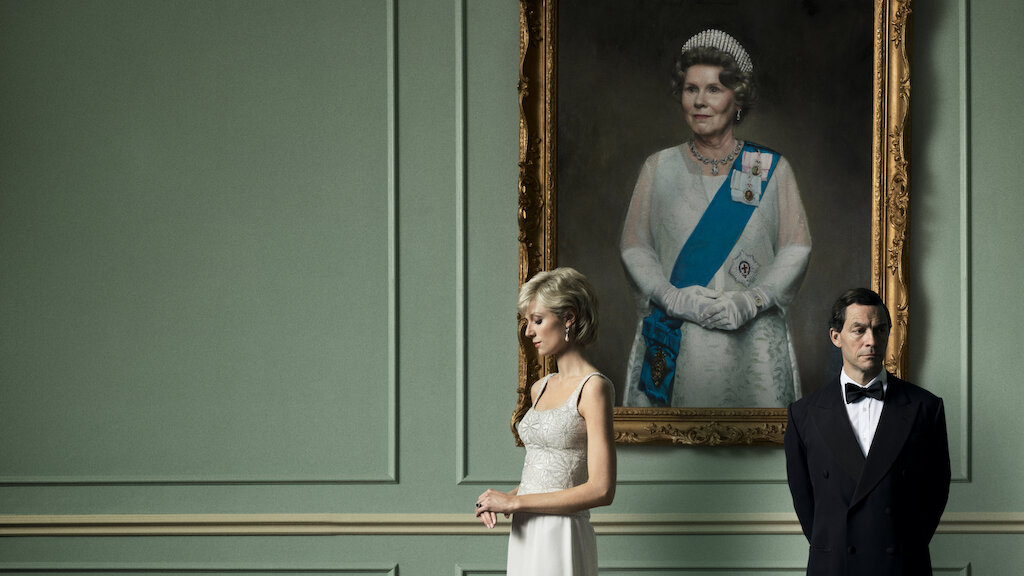
Though the TV series holds firm to its policy of careful emphasising and accusing, and still avoids snap judgments and simple categorisation, the latest season – in comparison to the previous ones – has met with much more criticism. Interestingly, negative comments did not involve the quality of the production as a cinematographic work but generally they were focused on the way that the series depicts specific historical events. The group of critics included people from the Queen’s circle, members of the cast as well as politicians or celebrities completely unrelated to the production. The episode that evoked the most intense emotions was the one where Prince Charles meets Prime Minister John Major to talk about the Queen’s possible abdication. The controversy around this particular scene in the series became serious enough for John Major to give an official statement where he denied any suggestions implying his collaboration with the series’ creators or providing them with any information on the private conversations with members of the royal family.
It is worth mentioning that the authors of critical remarks are predominantly British. Why such a change of heart in the country where the previous seasons gained a record-breaking popularity and the most important people in the state admitted watching the series?
The reasons are to be found in several places. Most certainly, a significant fact here is that by showing the subsequent affairs in British history, the TV series’ plot brings us closer to the present day. There are more and more situations, characters and events which are known to the viewers first hand, not from the history books. The series is then full of matters many viewers have their own opinion about or perspective on and it is unlikely they would resign from having those, merely to accept creators’ vision.
On the other hand, the British begin to realise that the huge popularity of the series even abroad in the recent years have changed the way in which the Queen and her circle are perceived by the recipients of popular culture around the world. The impact of the series’ form is much greater than the one made by history books that only those passionate about the history of Great Britain would read. Friday evening with Netflix enables British history to be present in the minds of the viewers from each corner of the world, with Morgan’s narration being the official, actual version of events. Undoubtedly, part of the audience understands that the vision they see on the screen is only one of many perspectives and interpretations. Thus, having watched a series’ episode, they would refer to other sources to extend their knowledge on the specific piece of history and make their own judgement. Still, it is a minority. For most viewers, The Crown remains the main source to gain information and formulate opinions on the British monarchy.
The third factor influencing this season’s reception is the unusual time correlation of events mentioned earlier. The series which focuses on the monarchy’s crisis at the moment when social order is disrupted due to the death of the Queen, seems to materialise fears that the current situation caused in many UK citizens. Yet, between the dark clouds of anxiety and insecurity, there is a silver lining personified in the TV series by Prince Charles whom both series’ creators as well as British citizens perceive as a chance for a fresh start. New, more modern and perhaps better version of the British crown.
Could The Crown teach history? The reaction of British society to the latest season clearly shows how significant of a production this one is. At the moment when the balance between continuity and change is upset, when the unity of nation on the traditional institution is of utmost importance, in the face of judgment and reckoning, but also opportunities to improve that, which does not seem to work anymore – then, it is the turn for the cinematography to speak. And the message is clear: I check – it says. The film remembers. Warns. Inspires. Helps to open the eyes and look ahead. Are we brave enough to admit we are looking in the mirror?
[1] Jean Raspail, Król zza morza, Wydawnictwo Dębogóra, Poznań 2008, p. 36. (translated by Jakub Bujno)


